A comprehensive guide to lye water (Kansui), a food-grade alkaline solution used in many dishes. Recipe for an easy homemade version is included.
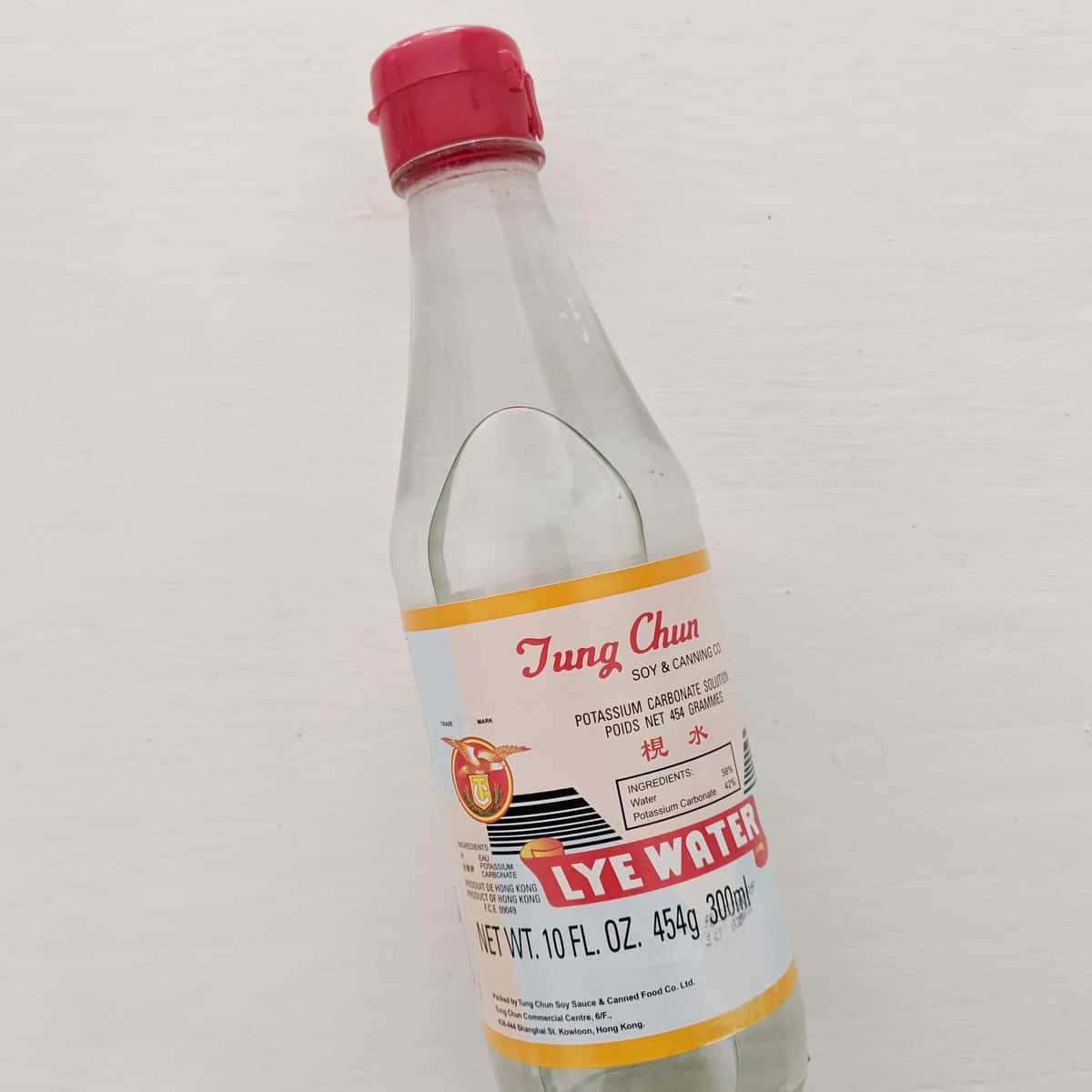
Jump to:
What is lye water?
Lye water (aka Kansui, 枧水), is a food-grade alkaline solution that’s used in many cuisines around the world. The ready-to-use, bottled one mainly contains potassium carbonate (K2CO3), a white alkali salt that’s soluble in water.
It looks like ordinary water: clear, transparent and odourless. But when you add it to water, the mixture will appear slightly cloudy. In general, lye water exhibits the following functions in the food production process:
- It gives a yellow tint to food
- It lends a mild but noticeable alkaline flavour
- It neutralizes the acid in food
- It’s used to preserve/cure certain foods
Recipes using lye water
You might not be familiar with the term lye water, but highly likely you’ve eaten food that contains this ingredient. You can find it in ramen noodles, Chinese mooncakes, pretzels, bagels, tortillas, cured olives, and many other foods.
Here are some classic Chinese recipes that use it:
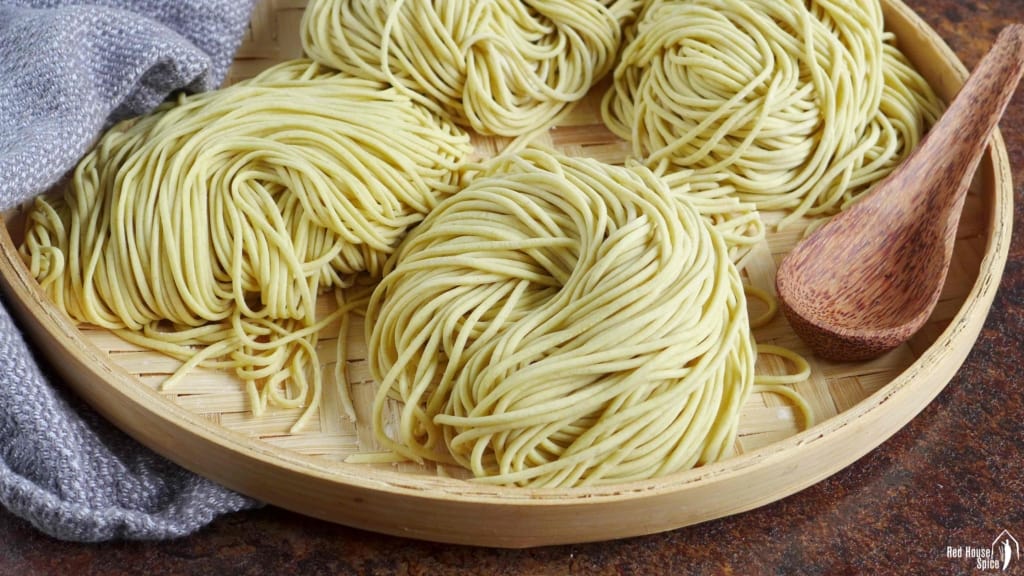
Alkaline Noodles (碱水面), aka Ramen Noodles. Lye water helps the noodles to become elastic, springy, and slightly yellow. It also makes them less likely to become mushy when added to broths and soups.
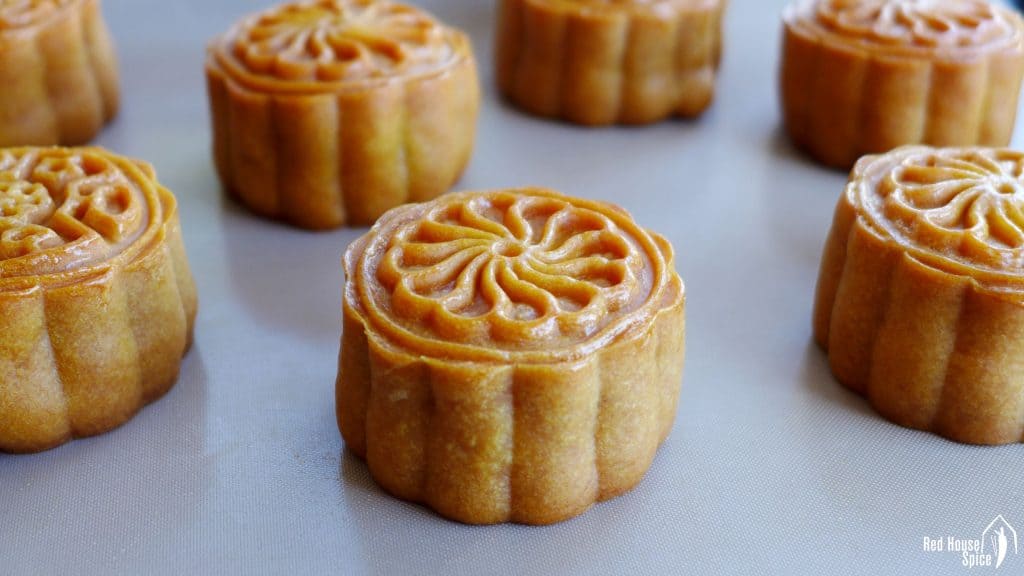
Cantonese Style Mooncakes (月饼). Lye water is used to raise the PH of the dough (neutralize the acid in the syrup). It also helps to gain an appetizing brown colour after baking and a fluffy tender texture.
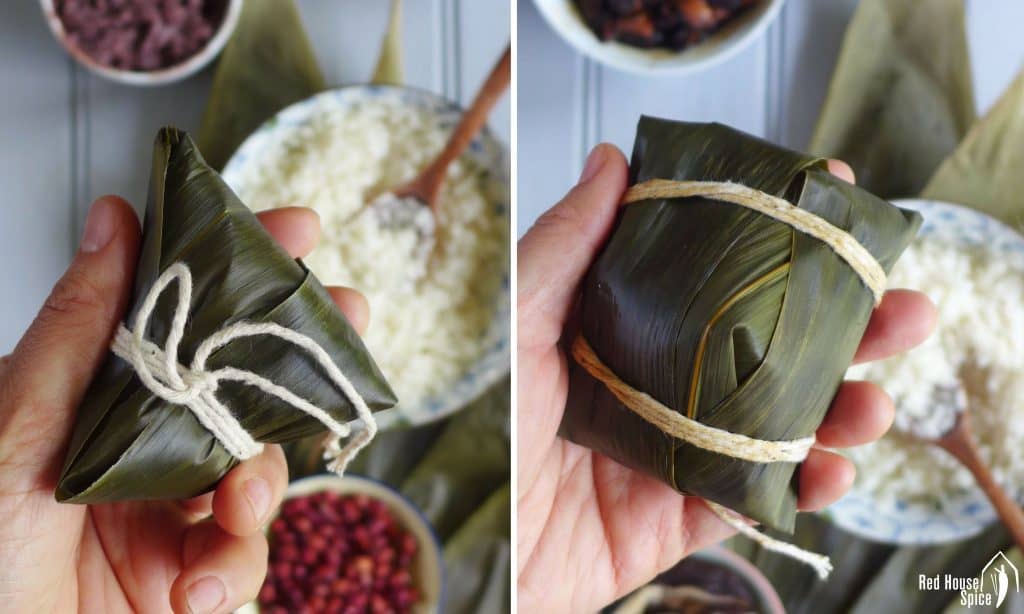
Zongzi (粽子), aka Chinese Sticky Rice Dumplings. My recipe for Zongzi doesn’t involve lye water, but in southern regions of China, Alkaline Zongzi (碱水粽) is very popular. It’s simply added to the soaked glutinous rice. Other preparation procedures remain the same.
How to use it
When lye water is used in moderation (usually a minimum amount), both the colour and taste that it creates are pleasant. However, an overdose of lye water would result in bitterness. So the general advice would be:
- Always follow the quantity suggested in a recipe.
- It’s ok to reduce the volume if you prefer a lighter colour or a milder taste.
- Be extra careful if you wish to increase the quantity. Add a tiny bit more at a time to test.
🛎 NB: Although lye water is perfectly safe to use in food, you should never taste it on its own or touch it with bare skin. It’s important to keep it away from children.
Where to buy
Lye water is commonly available at Chinese/Asian stores. You should be able to find it online as well (e.g. Amazon). It usually comes in glass bottles. Apart from Lye water or Kansui, the label may show other words like potassium carbonate solution, 枧水, 雪碱水, etc.
How to make your own
Don’t have easy access to shop-bought lye water? Don’t despair! It’s very easy, and inexpensive, to prepare a homemade version as a substitute.
You only need two ingredients for homemade lye water: Baked baking soda and water. Mix them at a 1:4 ratio. Then you’re ready to use it! It couldn’t be simpler, right? Read on to discover the why and how.
Why bake the baking soda?
The simple answer to this question is that you’ll create a stronger alkaline substance by heating the baking soda. When mixing it with water, you’ll get a solution that acts in a similar way as shop-bought lye water.
Want to have a deeper understanding? Read what Harold McGee, the author of On Food and Cooking, has written in his article For Old-Fashioned Flavor, Bake the Baking Soda. It explains in detail the food science behind this particular process.
How to bake baking soda
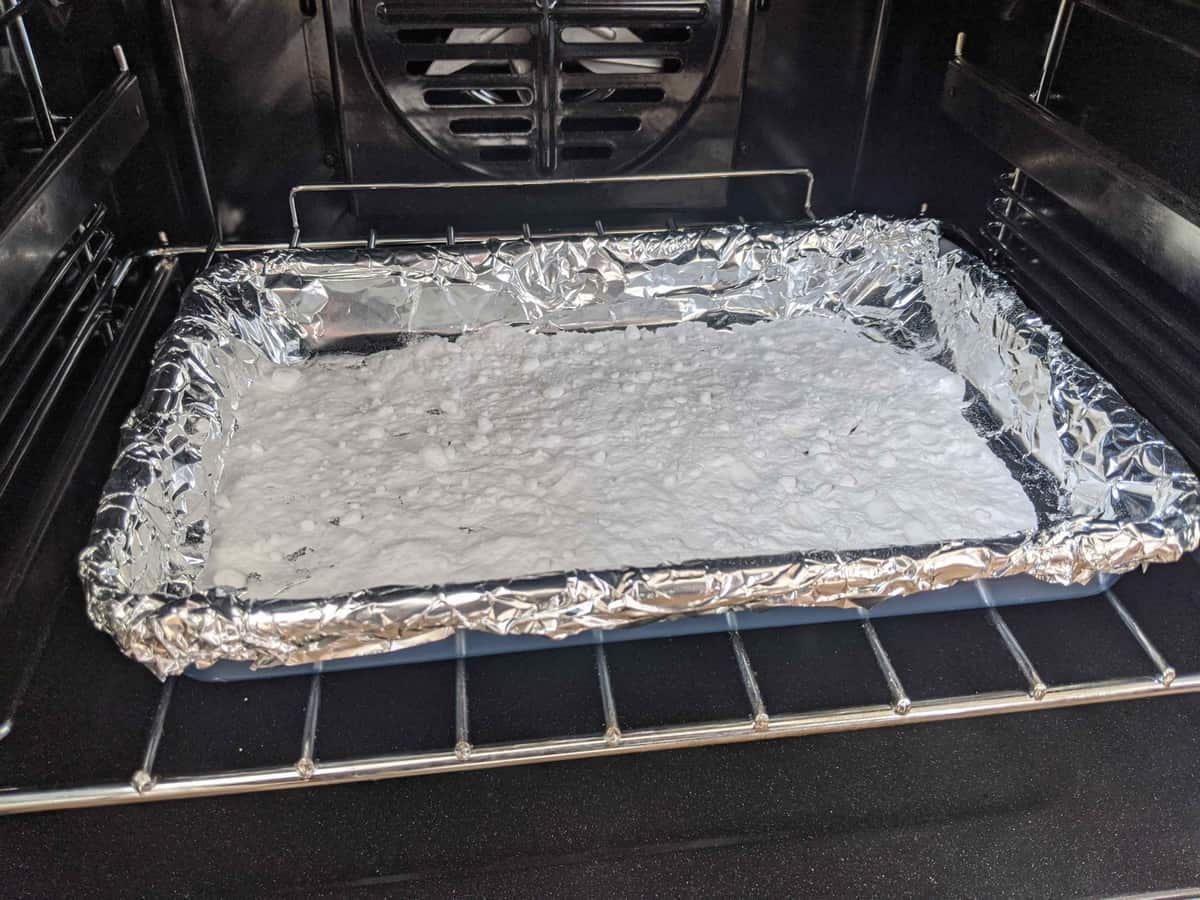
Follow these steps to bake the baking soda in the oven:
- Preheat the oven to 120°C (250°F).
- Cover a baking tray with tin foil (aluminium foil). Spread an even layer of baking soda over the foil.
- Put the tray into the preheated oven. Bake for 1 hour.
- Leave to cool naturally then transfer to an airtight container.
🛎 NB: Make sure that your hands don’t have direct contact with baked baking soda as it may cause irritation. Wear gloves if available.
How to make a solution
For the homemade version, you’ll need to mix baked baking soda with water at a ratio of 1:4. That is to say, for example, for 1 teaspoon of baked baking soda, you’ll need 4 teaspoons of water to dilute.
It’s best to mix baked baking soda and water when you’re ready to use it for a recipe. It’s not recommended to mix them in a big volume beforehand.
🛎 NB: Make sure you always use a dry, clean spoon to get the baked baking soda out of the container. Also, seal the container immediately after use since moisture would harden the baked baking powder.
Can I use baking soda directly
You might encounter recipes suggesting that you mix unbaked baking soda with water. Here are two reasons why you should think twice before undertaking this action:
- When mixed with water, unbaked baking soda creates a much milder alkali solution which will not have as much of an impact on the dishes that you use it in.
- Unbaked baking soda does not completely dissolve into water (Baked baking soda does).
📋 Recipe
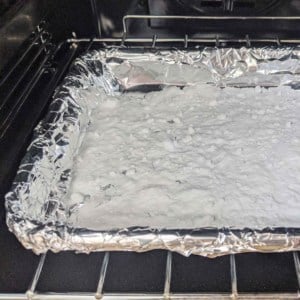
Homemade Lye water (Kansui)
Ingredients
- Baking soda
- Water
Instructions
- Preheat the oven to 120°C (250°F).
- Cover a baking tray with tin foil (aluminium foil). Spread an even layer of baking soda over the foil.
- Put the tray into the preheated oven. Bake for 1 hour.
- Leave to cool naturally then transfer to an airtight container (see note 1).
- When needed, mix 1 part baked baking soda with 4 parts water by volume (see note 2). Use the solution in recipes for your desired dishes.
NOTES
NUTRITION DISCLOSURE: Nutritional information on this website is provided as a courtesy to readers. It should be considered estimates. Please use your own brand nutritional values or your preferred nutrition calculator to double check against our estimates.

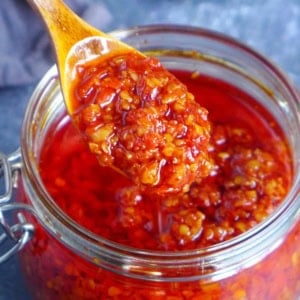
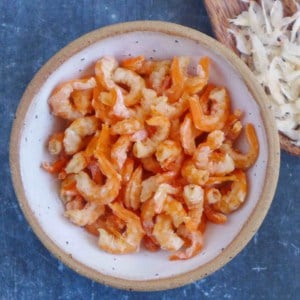

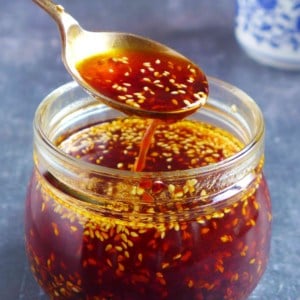
Hi Wei,
My baked baking soda isn’t dissolving in the water. I believe my ratios are correct; I used 2 ounces of baked baking soda with 8 ounces of water. I even microwaved the solution, but it still hasn’t dissolved! What can I do?
Sincerely, Seyoon
Thanks for your question. The 1:4 ratio I mentioned refers to volume, not weight. For example, 1 teaspoon of baked baking soda to 4 teaspoons of water. Measuring by ounces in weight can throw off the ratio, which might be why it’s not dissolving properly. Try measuring by volume instead and see if that helps.
Hi Wei,
Very interesting.
I have heard of a similar solution used in Mexico to Nixtamalize Maize kernels in order to make Masa dough for Tortillas etc.
I will give it a try the Chinese way one day.
Paul:-)
It’s always interesting to find similarities in different cuisines! Hope you get to try my recipes with lye water someday.
HELP
THE BAKING SODA ISN’T DISSOLVING
HELP
Hi, I would like to try this but my oven’s lowest temperature is 170C, should I bake it for less than an hour or go for the full hour at that temperature? Thank you so much!
I haven’t tested making baked baking powder at 170°C, and since baking powder is heat-sensitive, I’m not sure how it will turn out at a higher temperature. Unfortunately, I’m unable to provide guidance on this, but if you give it a try, I’d love to hear your results!